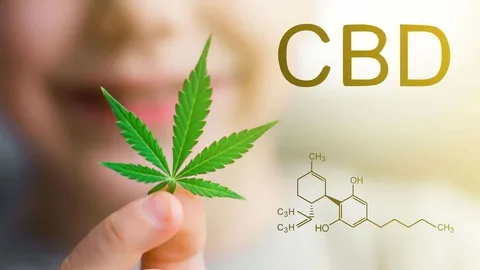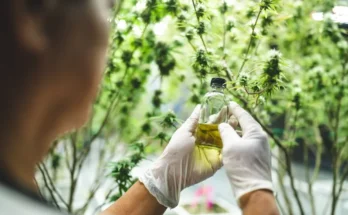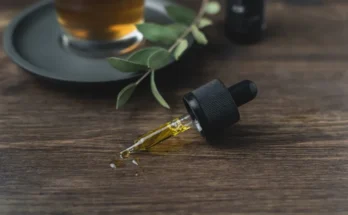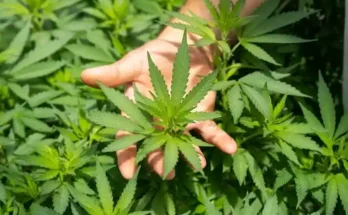CBD — short for cannabidiol — is one of the most intriguing natural compounds of the 21st century. Found in the cannabis plant, but without the high associated with marijuana, CBD has quietly made its way into oils, creams, gummies, teas, and even pet treats. It’s a molecule that doesn’t shout for attention but works behind the scenes, calming nerves, easing aches, and balancing the body’s inner rhythm.
In a world full of noise, CBD is a whisper from nature — reminding us that healing doesn’t have to be loud to be powerful.
The Roots of CBD:
Ancient Origins and Forgotten Wisdom
Long before CBD became a trendy ingredient in wellness products, its parent plant — Cannabis sativa — had already made history. Ancient Chinese texts, dating back to 2737 BCE, mention cannabis tea being used by Emperor Shen Nung to treat ailments like rheumatism, gout, and memory loss.
In ancient India, cannabis was considered one of the five sacred plants. Egyptian papyri referenced it for inflammation. Across centuries and continents, cultures intuitively understood the plant’s potential — even without isolating its individual compounds.
CBD, as we know it today, wasn’t discovered until 1940 by chemist Roger Adams, but it took several more decades — and the lifting of stigma — for its full potential to be acknowledged.
Separation from THC
While both CBD and THC come from the cannabis plant, they behave very differently in the body. THC (tetrahydrocannabinol) is psychoactive — it gives you the “high.” CBD, on the other hand, interacts with the body’s endocannabinoid system in a non-intoxicating way. It helps regulate mood, sleep, appetite, and immune response without altering your perception of reality.
This makes CBD ideal for those seeking relief without euphoria — a natural companion for wellness seekers, not thrill chasers.
How CBD Is Made?
The Art and Science of Extraction
The journey of CBD from a green leaf to a golden drop involves both patience and precision. First, high-CBD strains of hemp are cultivated — legally and under strict agricultural conditions. Unlike marijuana plants, hemp contains less than 0.3% THC by law, making it the ideal source for CBD extraction.
Once harvested, the plant material goes through a drying and curing process. Then comes the magic: CO₂ extraction. This is the cleanest and most efficient method. Pressurized carbon dioxide is used to pull CBD and other cannabinoids from the plant without leaving behind harmful residues. The result is a pure, potent extract that forms the base of many CBD products.
Other methods, like ethanol extraction or oil infusion, are still used, especially in artisanal or small-batch settings. But CO₂ remains the gold standard for high-quality CBD oil.
Refinement and Formulation
Raw CBD extract contains not only cannabidiol but also terpenes, flavonoids, and other cannabinoids. Depending on the desired product type, it may be further refined into full-spectrum CBD, Broad-spectrum CBD and CBD isolate.
From here, the oil is blended into tinctures, capsules, skincare, edibles, and more. Whether it ends up in a dropper or a lip balm, each product reflects a balance of nature and innovation.
Benefits of CBD:
Relief Without the Buzz
Perhaps the most celebrated benefit of CBD is its anti-inflammatory and pain-relieving properties. Whether you’re an athlete nursing sore muscles or someone dealing with chronic pain, CBD offers a subtle but effective alternative to pharmaceutical painkillers.
Unlike over-the-counter drugs, it doesn’t irritate your stomach or carry a risk of addiction. It simply helps your body quiet the fire of inflammation — and it does so without fogging your mind.
Anxiety, Meet Your Match
In a time when anxiety levels are at an all-time high, CBD is increasingly being used as a natural anxiolytic. Studies and user experiences — like those shared in CBD communities on Reddit — suggest that it helps reduce stress, calm the nervous system, and even support better sleep.
It’s not a sedative — rather, it helps bring your body back to a state of balance where rest and calm come more easily. For many, it’s become a trusted tool in the fight against insomnia and restlessness.
Skin’s Best Friend
CBD has also emerged as a rising star in skincare. Thanks to its anti-inflammatory and antioxidant properties, it can help reduce acne, soothe redness, and support overall skin health.
Whether applied as a serum or infused in a night cream, CBD is redefining the concept of holistic beauty — treating the skin not just as an aesthetic surface, but as a responsive organ that reflects internal balance.
Is CBD Safe?
Understanding Side Effects and Dosage
Most people tolerate CBD well, but it’s still important to understand how your body might react. Side effects are rare but can include fatigue, dry mouth, or changes in appetite. The key lies in starting with a low dose and adjusting gradually — every body is different, and so is every endocannabinoid system.
CBD may also interact with some medications, so consulting a healthcare provider before starting a routine is always wise.
Legality and Quality Control
In many countries, CBD derived from hemp is legal, provided it contains less than 0.3% THC. Still, the regulatory landscape varies. This makes third-party lab testing and product transparency crucial when shopping for CBD.
Look for brands that clearly label their products, provide certificates of analysis, and prioritize organic, pesticide-free farming. Trustworthy CBD is about more than effect — it’s about ethics and safety.
The Future of CBD:
CBD is no longer confined to wellness boutiques or health food stores. It’s crossing into mainstream culture — sold in pharmacies, featured in cocktails, endorsed by athletes, and studied by scientists. But unlike many wellness fads, CBD’s staying power lies in real results and ongoing research.
It’s not just a fleeting craze — it’s a reconnection with nature’s wisdom, and a reclamation of balance in modern life.
As research continues, we’re learning even more about CBD’s potential — from neurological disorders like epilepsy to autoimmune diseases and beyond. Its non-addictive profile makes it a promising candidate for addressing the opioid crisis, while its gentle impact opens doors in pediatric and geriatric care alike.
In short, we’ve only scratched the surface of what this humble compound can offer.
Conclusion:
In a world that moves too fast, CBD invites us to slow down. It doesn’t overwhelm. It doesn’t intoxicate. It simply offers support — like a quiet guide helping the body remember how to heal itself.
From its ancient roots to its modern renaissance, CBD’s story is one of resilience, clarity, and connection. It bridges science and soul, reminding us that sometimes, the most powerful medicine comes from the earth itself.
Whether you’re new to CBD or a longtime advocate, one thing is clear: this little molecule is not just a product — it’s a philosophy of balance, and perhaps, a new way forward in wellness.




